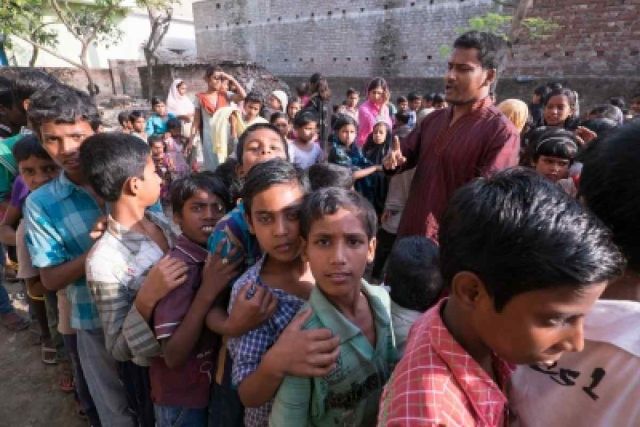
by Editor | May 25, 2021 | Entrepreneurship, Interviews, News, Social Entrepreneur, Success Stories
 By Bhavana Akella,
By Bhavana Akella,
Murshidabad (West Bengal) : Walking home from school in a small town in West Bengal, a nine-year-old boy saw some of his friends work as rag-pickers. The thought that his companions were unable to study like him because they were poor so agonised the young Babar Ali that he decided to do something about it and bring school to those who could not afford it.
Determined to share his education as a fifth grader at a state-run school at Beldanga town in Murshidabad district, about 200km north of Kolkata, he turned teacher to his poor friends in the backyard of his own home. With a dream to make India’s children have access to quality education despite their economic backgrounds, he has been, over these many years, a silent crusader imparting education to hundreds of poverty-stricken child labourers in the state.
“I couldn’t tolerate my friends picking garbage while I attended school. So I asked them to join me in the roofless backyard of my home, so I could teach them how to read and write,” Babar, now a 25-year-old youth, recalled to IANS in an interview.
That backyard became Babar’s school, Ananda Siksha Niketan (meaning Home for Joyful Learning), in 2002, making him possibly the world’s youngest headmaster.
“My school began with a total of eight students, including my five-year-old younger sister Amina Khatun. We sat together under a guava tree for three hours every afternoon learning to read, so that the children who worked as rag-pickers or ‘beedi’ (handrolled cigarettes made of unprocessed tobacco) rollers could continue to work in the mornings,” recalled Babar.
With a population of about eight million, Murshidabad district has a large section of its adults and children working as daily-wage labourers in farms and rolling beedis. The district is among the largest manufacturer of beedis in the country. Collecting used-up chalk pieces from his school, Babar continued to teach children in his neighbourhood how to read and write in Bengali along with basic math, science and geography, completely free of cost, while he was in school himself.
“Teachers at my school thought I was stealing chalk to scribble on the walls, but after they learnt that I was teaching other children at my home, they began to offer me a box of chalk each week,” shared Babar.
The support from his mother Banuara Bibi, an anganwadi worker, and father Mohammad Nasiruddin, a jute trader, both of whom were school dropouts, allowed him to pursue his vision to create an educated neighbourhood, he said.
“The children I have been teaching receive very little support from their families and are often left to fend for themselves. With help from my family and teachers at school, I have been able to run my school and provide the kids with uniform, books and other reading material,” added Babar.
Admitting that it was a difficult task convincing families to send their children to his home school, Babar said he gradually won the trust of parents as students grew fond of him and enjoyed his classes.
Donations from teachers at his school, district officials, Indian Administrative Service (IAS) officers from the region and other individuals has kept Babar’s institution running through the years — and in 2015, it shifted into a building near his home, with a recognition as a private school from the West Bengal School Education Department.
“The focus is on holistic education at Ananda Siksha Niketan, as I want the students to positively impact the society through whatever professions they choose in the future,” he stressed.
In a span of about 16 years, from 2002 till date, Babar has taught more than 5,000 children from Classes 1 to 8 — a few of whom have have returned to his school to work as teachers.
“Six of my former girl students have returned to the school as teachers after finishing their under-graduation courses,” said Babar, who holds a MA in English literature from the University of Kalyani, about 50 km from Kolkata.
Pursuing another Masters in History from the same university, Babar remains an ambitious headmaster who wants to bring about change in the district’s poor female literacy rate, which stands at just above 55 per cent, according to data from the district administration.
“Several families are still reluctant to send their girls to a school and prefer to marry them off in their teens, but through continuous effort we are seeing a change in their attitudes. Parents are realising the need for education as children are in turn helping them read, make a signature on paper and write,” he added.
The co-education school currently has 500 students, 10 teachers and one non-teaching staff, with classes from 1 to 8.
“We require more classrooms and infrastructure as our building can accommodate only 350-400. I also want to expand the school up to Class 10 so that kids do not have to go to other towns for education.”
Babar, who is also a motivational speaker, offering talks across the country inspired by venerated Hindu monk-philosopher Swami Vivekananda’s (1863-1902) teachings, wants to set up more such schools catering to the poorest sections across the country.
“Education for all will remain my life mission and, to realise that, several institutions and individuals need to come together,” he reiterated.
Babar’s inspiring journey has also made it to the first year English text book of pre-university (Class 11) in Karnataka’s state board and Class 10 communicative English text of the Central Board of Secondary Education (CBSE).
“Governments alone cannot change the system. We need people of all sections to come forward and work together to bring in quality education for all our country’s children, irrespective of their social classes,” stressed Babar.
(The weekly feature series is part of a positive-journalism project of IANS and the Frank Islam Foundation. Bhavana Akella can be contacted at bhavana.a@ians.in)
—IANS
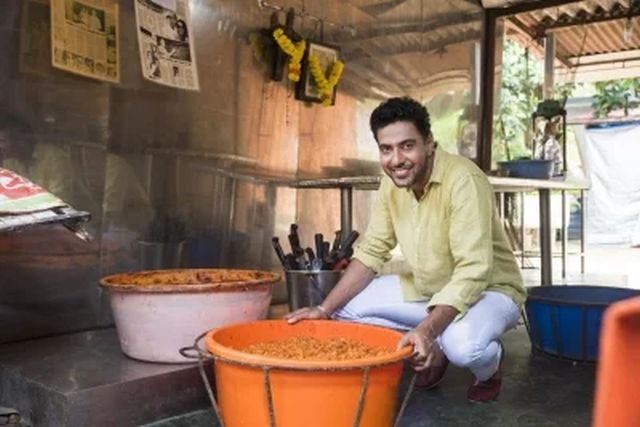
by Editor | May 25, 2021 | Entrepreneurship, Interviews, Social Entrepreneur, Success Stories

Chef Ranveer Brar
By Vishnu Makhijani,
New Delhi : Time was when many trains on the Indian Railways network featured dining cars where you could savour a leisurely meal of your choice as the landscape rolled by. Today, you are served at your berth in a plastic container containing food that is not necessarily your choice. Fear not. The good times are back as Chef Ranveer Brar, after an arduous 50-day shoot unveils “The Station Master’s Tiffin” on the small screen to literally take you back into time.
“We realised that we are probably the last generation that has seen the railways in their full bloom because we never used to fly, we used to always take the trains. That was a story that needed to be told. The food that is so famous or used to be famous on the stations that people used to wait for, wake up for or die to eat also needed to be spoken about,” Brar, Masterchef India judge, senior executive chef and travel show host among the multifarious caps he wears, told IANS in an email interview.
“Destinations that are famous because of the trains needed to be spoken about. There is a whole culture and sub-culture of eating that trains have created that needed to be spoken about and hence we said let’s do a show and also have some fun,” Brar said of the 14-episode show that premiers on LF channel on October 3 and will air on Wednesday’s and Thursdays at 8 p.m.
Extensive research has gone into the series.
Two recce teams were at it for more than a year but after two episodes were shot, it was realised that not enough research been done.
“So we went back into researching. We hired experts of the subject. Among them was Arup Kumar Chaterjee who has written a book called “The Purveyors of Destiny” on the Indian Railways. We tried to do it in the right way,” said Brar, whose other TV shows are “Great Indian Rasoi”, “Ranveer’s Cafe, “Healthy but Tasty” and “Global Menu” and who has also authored a book titled “Come Into My Kitchen”.
Ever a hand-on man, Brar was on the road for 50 days during the shooting.
“The shooting has been an exhilarating experience. Being a part of the culinary field, I have had the opportunity to visit various countries and learn new culinary techniques. But travelling through my own country in trains, visiting wonderful places, discovering inspiring stories of people who treat you as their own household member, was hands down one of the best experiences of my life. The entire journey encompasses all the four corners of the country and viewers will get to enjoy an insider’s perspective.
“The shooting was on the trains, on railway stations and it was at destinations where only trains can take us. So, for example, we also shot at Sundilla (in Telengana), a destination where only a train takes you.
“The selection (of trains and sations) was based on the stories that needed to be told. For example, we knew we had to go down south because the Pamban Bridge (which connects Rameswaram town on Pamban Island to the mainland) was a story that needed to be told. The Konkan Railway and other broader stories needed to be told for the Indian Railways, which then decided the smaller stories that will accompany them,” Brar explained.
He, however, was unwilling to part with other details of the show “as this would spoil the surprise”.
Any interesting nuggets from the shooting process?
“Lots of interesting nuggets. One of my most fascinating train journeys has always been the toy train from Kalka to Shimla and through the Barog tunnel. I think people still believe it’s haunted. It was quite a thing when I walked in it with a lantern at 1 a.m. in the night. It was very interesting.
“Also, Sundilla ke Ladoo is something many people have grown up eating but never knew how it is made because nobody stops at Sundilla. I went back to Sundila and figured out how the ladoos were made. That was fascinating because otherwise you just pick the ladoo at the station and just leave,” Brar said.
What’s next on the cards?
“I will continue travelling and exploring, that is for sure. Let’s see where the travel and journey takes me,” he said.
The show will also be telecast on Zee TV every Sunday at 12 noon from October 7 onwards.
(Vishnu Makhijani can be contacted at vishnu.makhijani@ians.in)
—IANS
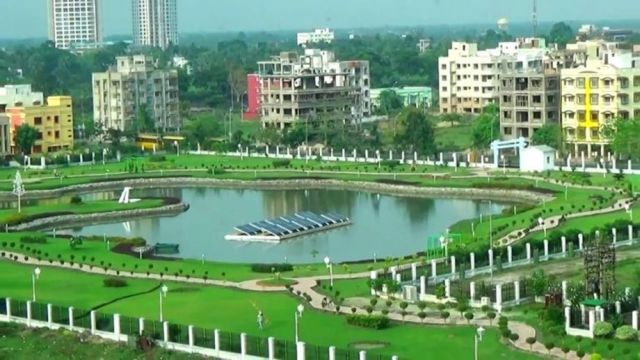
by Editor | May 25, 2021 | Interviews, World
 By Vishal Gulati,
By Vishal Gulati,
San Francisco : An urban industrial landscape mix with natural and agricultural spaces is ideal for striking a balance between the quality of human life and economic prosperity. It also helps reduce impact of a changing climate trigger, a French expert says.
“There is a heavy demand for land due to industrialiation that is eating away the remaining land. But local legislations is needed to check this urban sprawl,” Caroline Doucerain, Vice President of the Grand Parc metropolitan area in Versailles, told IANS in an interview conducted through an interpreter.
The Grand Parc, which lies in the Saclay Plateau some 20 km south of Paris, is a perfect example of agricultural land protection where the per hectare wheat yield is between 90 and 100 quintals against the national average of just 74 quintals per hectare. And, its vibrant innovation ecosystem aims to become the Silicon Valley of France.
Doucerain said major climate resilience initiatives had been adopted by her country to reduce greenhouse gases, increase carbon sequestration and ensure food security.
For her, strong land conservation laws are not enough. The success lies in supporting citizen’s cooperatives.
“This is why action plans through public dialogue were established in 2010 to implement the objectives of the Natural, Agricultural and Forest Protection Zone to ensure overall sustainable development in the Saclay Plateau,” she pointed out.
Doucerain was in this California city to study the work of the Santa Clara Valley Open Space Authority of the US at ‘A Tale of Three Valleys’, an affiliate event of the just-concluded Global Climate Action Summit.
The Open Space Authority, which serves a population of about 1.4 million people, comprising San Jose, conserves the natural environment, supports agriculture and connects people to nature by protecting open spaces.
“My hometown, for instance, is home to Air Liquide’s research center, completely rebuilt to accommodate 400 researchers,” said Doucerain, who is also the Mayor of Loges-en-Josas, a small rural community of 1,600 people.
Historically, the Versailles and Saclay areas were an agricultural region with particularly fertile, loamy soil.
After 1945, research centres looking for a serene environment close to Paris began appearing in the region. These included the National Center for Scientific Research, the Atomic Energy Commission and a centre for energy research.
“Many French and international companies moved to our region, making Courtaboeuf the leading business park in Europe. Among many others, HP, GSK and Econocom have offices there.”
But economic development also poses challenges.
“As economic development and research were gaining ground in our area, several farmers faced a major dilemma: Should they give in to real-estate pressures, sell their land and move to a more remote area as some in previous generations had done?
“Or should they trust their entrepreneurial instincts and deep ties to the area, which told them there surely must be innovative ways to approach production and take advantage of opportunities right there,” she said.
There were more than 600,000 potential local consumers and 12 million in the larger region.
To answer the questions about the future of their farms, she said, the farmers asked the Ile-de-France Regional Council to conduct an in-depth study.
Nearly all 122 stakeholders surveyed believed that farming was an element that gives structure to the plans for this geographical area.
The farms are not just empty spaces to be filled. The Terre et Cité association was thus established. It includes four groups of participants: Farmers, municipalities, associations and civil society.
In 2008, several municipalities tackled the issue of procuring locally-grown produce for their cafeterias.
Terre et Cité was selected to facilitate the implementing of concrete projects with local supply networks.
“Today, more than one million meals a year are served that include at least one local ingredient,” an elated Doucerain proclaimed.
“Today it is obvious that farms and open spaces offer fertile ground for many future innovations in the region. The preservation of land is essential to the long-term vitality and attractiveness of the Saclay Plateau.
As a result, we have over 10,000 acres of protected agricultural and open-space lands, including almost 6,000 acres of land devoted to farming. Even the so-called Paris region consists of almost 50 per cent farmland,” she pointed out.
The Saclay Plateau has markedly developed organic farming.
Organic now represents a surface area six times greater than seen across the larger Paris region. Moreover, 20 per cent of land in the area is devoted to producing products like bread, yogurt, chicken, fruits and vegetables for local consumption.
“Farms, open spaces and particularly wooded areas within the plateau are important touch points of our identity. They characterise our landscapes and are integral to the quality of life that many people in the Paris region seek,” Doucerain added.
(Vishal Gulati was in San Francisco at the invitation of the Climate Trends to cover the Global Climate Action Summit (GCAS). He can be contacted at vishal.g@ians.in)
—IANS
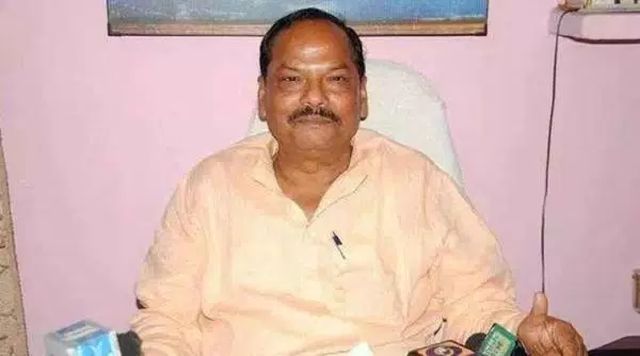
by Editor | May 25, 2021 | Interviews, Politics

Raghubar Das
By Brajendra Nath Singh,
Ranchi : With BJP deciding to focus on identity issues in the coming elections, Jharkhand Chief Minister Raghubar Das says there is need for a National Register of Citizens (NRC) in his state also to check infiltration from Bangladesh because Hindus have become a minority in some districts.
He also favours job reservations on the basis of economic backwardness and called for a consensus on the issue.
“We will take all Bangladeshis out one by one. There is no doubt about it. In Pakur, Hindus are now in a minority. Bangladeshis are more than 50 per cent in Pakur while the numbers have increased significantly in Sahebganj, Godda and Jamtara districts. We will implement NRC in Jharkhand,” Das told IANS in an interview during a visit organised by the BJP’s Good Governance Cell.
The Jharkhand government has approached the union Home Ministry in this regard and is waiting for its response for initiating the exercise.
The Chief Minister accused the political parties of patronising Bangladeshi infiltrators across the state and said the issue needs to addressed at the earliest.
“It is very unfortunate that Congress has been doing votebank politics even after 67 years of our independence. All these problems are due to Congress’ votebank politics. They did politics for breaking the country while we (BJP) are doing politics to unite the country,” he said.
He alleged that Sahebganj, Pakur, Godda and Jamtara are the worst-hit districts where hundreds of illegal migration of Bangladeshi infiltrators has taken place in Jharkhand.
Seeking job reservations on the basis of the economic criteria, the chief minister demanded a national-level discussion on the issue to evolve a consensus.
“I am in favour of reservation on the basis of economic condition. In society, everybody is not rich. It is not that all those belong to upper caste are rich. I am in favour of it. There are poor people in every society. The issue needs to be discussed and a consensus needs to be evolved, he said.
The Chief Minister also backed the idea of ‘One Nation, One Election’ but rejected any advancing of dates for the Assembly polls in Jharkhand along with the Lok Sabha polls in 2019. Assembly polls are scheduled in Jharkhand six months after the Lok Sabha polls.
“I am also in favour of one nation, one election. The Prime Minister has given a call for debate on the issue. An atmosphere in its favour must be created by debate and discussion. It is not that we want and they want. It’s a matter of consensus. It needs to be passed by parliament. If a consensus is evolved, there may be simultaneous polls of Lok Sabha and Assemblies in 2024, he said.
Asked whether he would go for Assembly polls together with Lok Sabha polls, he said: our election will be at its scheduled time and Lok Sabha elections will be at its scheduled time. There are no ifs and buts. Why would I go for early polls. My condition is not bad.”
The Chief Minister said that there would be no impact of the grand alliance in 2019 and claimed that the BJP under the leadership of Prime Minister Narendra Modi would again emerge victorious.
“Whether it is alliance or grand alliance (mahagathbandhan), we are not worried at all. Can oil and water mix together? Even when you mix oil and water together they will still separate. Our focus is on strengthening the organisation. We have a leadership like Modiji, on whom the people of the country have strong faith.”
(Brajendra Nath Singh can be contacted brajendra.n@ians.in)
—IANS
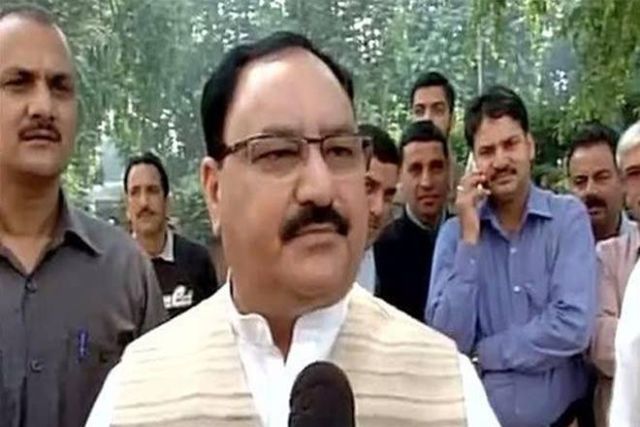
by Editor | May 25, 2021 | Interviews

Jagat Prakash Nadda
By Jaideep Sarin,
New Delhi : What is touted as the world’s largest healthcare scheme – Ayushman Bharat-Pradhan Mantri Jan Arogya Yojana (PMJAY) – will benefit over 500 million (50 crore) people which is more than the combined population of the United States, Canada and Mexico, Union Health Minister Jagat Prakash Nadda said.
The scheme, to be launched by Prime Minister Narendra Modi on September 25, will provide a cover of up to Rs 5 lakh per family per year for secondary and tertiary care hospitalisation.
“This is a very bold decision taken by Prime Minister Modi and this will ensure that poor people will not have to bother any longer for the cost of healthcare facilities,” Nadda told IANS in an interview here.
He said that 30 states and union territories had signed the memorandum of understanding and have started working on implementation of the mission. Maharashtra and Tamil Nadu have also joined the scheme recently. A pilot project of the scheme was launched in 22 states and union territories.
The ministry has received 15,686 applications for hospital empanelment, including private hospitals, so far.
“Majority of the people (who will now be covered under the Ayushman Bharat scheme) could not afford the healthcare and hospitalisation. Things will change for a big population of the country,” Nadda, whose ministry has been preparing for the launch of the ambitious healthcare scheme, said.
“Over 10.74 crore vulnerable entitled families (approximately 50 crore beneficiaries) will be eligible for these benefits. PMJAY will help reduce catastrophic expenditure for hospitalisation, which impoverishes people and will help mitigate the financial risk arising out of catastrophic health episodes. When fully implemented, PMJAY will become the world’s largest fully government-financed health protection scheme,” Nadda said.
As per the health ministry estimates, 62.58 per cent of the population in the country has to pay for their own health and hospitalization expenses and are not covered through any form of health protection.
Each year 4.6 per cent of the population is pushed below the poverty line as people meet their healthcare needs spending large proportion of their income and savings, borrowing money or selling their assets.
Ayushman Bharat aims to cover prevention, promotion and ambulatory care at primary, secondary and tertiary level.
The scheme envisages creation of 1,50,000 health and wellness centres which will bring health care closer to the homes of the people. These centres will provide comprehensive primary health care covering both maternal and child health services and non-communicable diseases, including free essential drugs and diagnostic services.
The second component of the scheme is the PMJAY which provides health protection cover to poor and vulnerable families for secondary and tertiary care.
The National Sample Survey Organization (NSSO) has found that 85.9 per cent of rural households and 82 per cent of urban households have no access to healthcare insurance/assurance.
More than 17 per cent of Indian population spends at least 10 per cent of household budget for health services.
The PMJAY primarily targets the poor, deprived rural families and identified occupational category of urban workers’ families as per the latest Socio-Economic Caste Census (SECC) data for both rural and urban areas.
“There is no cap on family size and age as well as restriction on pre-existing conditions (to avail the new scheme). It will cover hospitalisation cost from inpatient care to post-hospitalisation care. Everything will be cashless and paperless,” Nadda said.
(Jaideep Sarin can be contacted at jaideep.s@ians.in
—IANS





